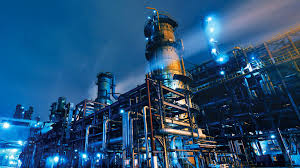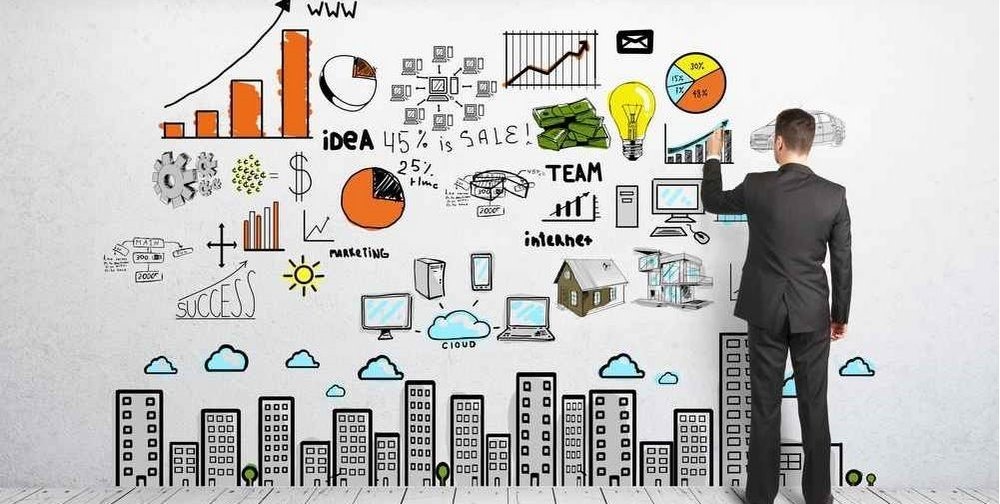In an era where technology is transforming every aspect of our lives, facilities management (fm) is no exception. Modern facilities management is no longer just about maintaining buildings and equipment; it’s about optimizing operations, enhancing efficiency, and improving the experience of occupants. Technology plays a crucial role in this evolution, offering tools and solutions that were unimaginable just a few years ago. This blog post explores the multifaceted role of technology in modern facilities management, highlighting innovations that go beyond the basics and examining their impact on the industry.
1. The integration of iot and smart building technologies
Why it matters:
The internet of things (iot) is revolutionizing facilities management by enabling real-time monitoring and control of building systems. Iot devices collect and transmit data from various components of a facility, providing facilities managers with unprecedented insights into building performance.
Key innovations:
Smart sensors: iot-enabled sensors can monitor everything from temperature and humidity to occupancy levels and air quality. These sensors provide real-time data that facilities managers can use to optimize energy use, improve indoor air quality, and enhance occupant comfort. For instance, smart thermostats can adjust heating and cooling based on occupancy, leading to energy savings of up to 30%, according to the u.S. Environmental protection agency (epa).
Predictive maintenance: iot technology allows for predictive maintenance by continuously monitoring the condition of equipment. Sensors can detect signs of wear and tear or potential failures before they lead to breakdowns, enabling facilities managers to schedule maintenance proactively. According to mckinsey& company, predictive maintenance can reduce maintenance costs by up to 20% and decrease unplanned downtime by up to 50%.
Automated systems: iot can automate various building systems, such as lighting, hvac, and security. For example, lighting systems can be programmed to adjust based on the time of day or occupancy, reducing energy consumption and extending the lifespan of lighting fixtures.
2. Advanced building management systems (bms)
Why it matters:
Building management systems (bms) have been around for decades, but advances in technology have made them more powerful and integral to modern facilities management. Bms integrate various building systems—such as hvac, lighting, security, and fire safety—into a centralized platform, allowing for streamlined management and control.
Key innovations:
Cloud-based bms: traditional bms required on-site servers and hardware, but cloud-based bms solutions offer greater flexibility, scalability, and accessibility. Facilities managers can now monitor and control building systems from anywhere, using a smartphone or computer. This remote access is particularly valuable for managing multiple facilities across different locations.
Ai-driven analytics: modern bms are increasingly incorporating artificial intelligence (ai) to analyze data collected from building systems. Ai algorithms can identify patterns, predict system failures, and recommend energy-saving measures. For example, ai can analyze energy consumption data to identify inefficiencies and suggest adjustments to hvac settings that could reduce energy use by up to 20%.
Enhanced security integration: bms can now integrate with advanced security systems, including biometric access control, video surveillance, and intrusion detection. This integration allows for a more comprehensive approach to building security, with real-time alerts and automated responses to security breaches.
3. The rise of computer-aided facilities management (cafm) software
Why it matters:
Computer-aided facilities management (cafm) software is becoming an essential tool for facilities managers, providing a digital platform for managing every aspect of facility operations. From maintenance scheduling to space management, cafm software offers a level of organization and efficiency that was previously unattainable.
Key innovations:
Maintenance management: cafm software allows facilities managers to schedule and track maintenance activities, ensuring that tasks are completed on time and within budget. The software can generate work orders, track inventory, and monitor maintenance costs, providing a comprehensive view of maintenance operations. According to ifma (international facility management association), organizations that use cafm software for maintenance management can reduce maintenance costs by up to 15%.
Space management: cafm software provides tools for managing space utilization, allowing facilities managers to optimize the use of available space. This is particularly important in the post-pandemic world, where hybrid work models require flexible space management solutions. Cafm software can track occupancy levels, manage desk reservations, and analyze space usage patterns to ensure that space is used efficiently.
Asset management: cafm software also includes asset management capabilities, allowing facilities managers to track the lifecycle of assets, schedule replacements, and manage warranties. This proactive approach to asset management can extend the lifespan of assets and reduce the total cost of ownership.
4. The role of artificial intelligence and machine learning
Why it matters:
Artificial intelligence (ai) and machine learning (ml) are transforming facilities management by enabling more intelligent decision-making and automation. These technologies can analyze vast amounts of data to identify trends, predict outcomes, and optimize operations.
Key innovations:
Energy optimization: ai algorithms can analyze energy consumption data to identify inefficiencies and suggest energy-saving measures. For example, ai can predict peak energy usage times and adjust hvac settings accordingly, reducing energy costs without compromising comfort. The lawrenceberkeley national laboratory estimates that ai-driven energy optimization can reduce building energy use by up to 15%.
Predictive analytics: ml models can predict when equipment is likely to fail, allowing facilities managers to perform maintenance before a breakdown occurs. This proactive approach to maintenance reduces downtime and extends the lifespan of equipment. In addition, predictive analytics can be used to forecast future maintenance needs, helping facilities managers plan more effectively.
Smart cleaning: ai is also being used to optimize cleaning schedules and processes. For example, ai-powered robots can clean floors autonomously, adjusting their routes based on real-time occupancy data. This not only improves cleaning efficiency but also ensures that high-traffic areas are cleaned more frequently, enhancing overall hygiene.
5. Sustainability and environmental impact
Why it matters:
Sustainability is a top priority for modern facilities management, and technology plays a key role in achieving environmental goals. From energy management to waste reduction, technology helps facilities managers minimize the environmental impact of their operations.
Key innovations:
Energy management systems (ems): ems integrate with iot sensors and bms to monitor and control energy use in real time. These systems can automatically adjust lighting, heating, and cooling based on occupancy and weather conditions, reducing energy waste. According to the world green building council, buildings that use ems can reduce their energy consumption by up to 30%.
Water conservation: technology is also being used to conserve water in facilities. Smart irrigation systems, for example, use weather data and soil moisture sensors to optimize watering schedules, reducing water waste. Additionally, smart meters can monitor water use in real time, identifying leaks and inefficiencies that would otherwise go unnoticed.
Sustainable materials and processes: technology is enabling the use of more sustainable materials and processes in facilities management. For example, 3d printing is being used to create building components from recycled materials, reducing waste and the need for new raw materials. Similarly, digital twin technology allows facilities managers to simulate the environmental impact of different building designs and operational strategies before implementation.
6. Enhancing the occupant experience
Why it matters:
In addition to improving operational efficiency, technology is transforming the occupant experience in modern facilities. From personalized environments to enhanced security, technology ensures that occupants are comfortable, safe, and productive.
Key innovations:
Personalized environments: iot sensors and ai algorithms can create personalized environments for occupants, adjusting lighting, temperature, and even air quality based on individual preferences. For example, smart lighting systems can adjust brightness and color temperature based on the occupant’s activities, improving comfort and productivity.
Contactless solutions: the covid-19 pandemic has accelerated the adoption of contactless solutions in facilities management. From contactless entry systems to touchless elevators, technology is helping to create safer, more hygienic environments. These solutions not only reduce the risk of infection but also enhance convenience for occupants.
Wellness and wellbeing: technology is also being used to promote wellness and wellbeing in modern facilities. For example, air quality sensors can monitor levels of co2, humidity, and pollutants, ensuring that indoor environments are healthy and comfortable. Additionally, biophilic design elements, such as virtual windows or digital nature scenes, can be integrated into building interiors to reduce stress and enhance occupant wellbeing.
7. Data security and cybersecurity in facilities management
Why it matters:
As facilities management becomes more reliant on technology, data security and cybersecurity are becoming increasingly important. Protecting sensitive data and ensuring the integrity of building systems is critical to maintaining safe and secure facilities.
Key innovations:
Cybersecurity measures: facilities management systems are prime targets for cyberattacks, especially as more systems are connected to the internet. Facilities managers must implement robust cybersecurity measures, including firewalls, encryption, and access controls, to protect against threats. According to cybersecurity ventures, the cost of cybercrime is expected to reach $10.5 trillion annually by 2025, making cybersecurity a top priority for facilities managers.
Data privacy: with the increasing use of iot devices and smart building technologies, facilities managers must also ensure that occupant data is handled in compliance with data privacy regulations, such as gdpr. This includes implementing data anonymization techniques and providing transparency about how data is collected, used, and stored.
Disaster recovery: in the event of a cyberattack or system failure, facilities managers need to have a disaster recovery plan in place. This plan should include regular backups of critical data, redundant systems to ensure continuity of operations, and procedures for restoring systems and data quickly.
Conclusion: embracing technology in modern facilities management
Technology is reshaping facilities management, offering new tools and capabilities that enhance efficiency, sustainability, and the occupant experience. From iot and ai to advanced bms and cafm software, the integration of technology in fm is driving significant improvements across the board.
However, with these advancements come new challenges, particularly in the areas of data security and privacy. Facilities managers must be proactive in addressing these challenges while continuing to leverage technology to achieve their operational and strategic goals.
As technology continues to evolve, the role of facilities management will only become more critical. By staying ahead of the curve and embracing the latest innovations, facilities managers can ensure that their buildings are not only well-maintained but also future-ready.



